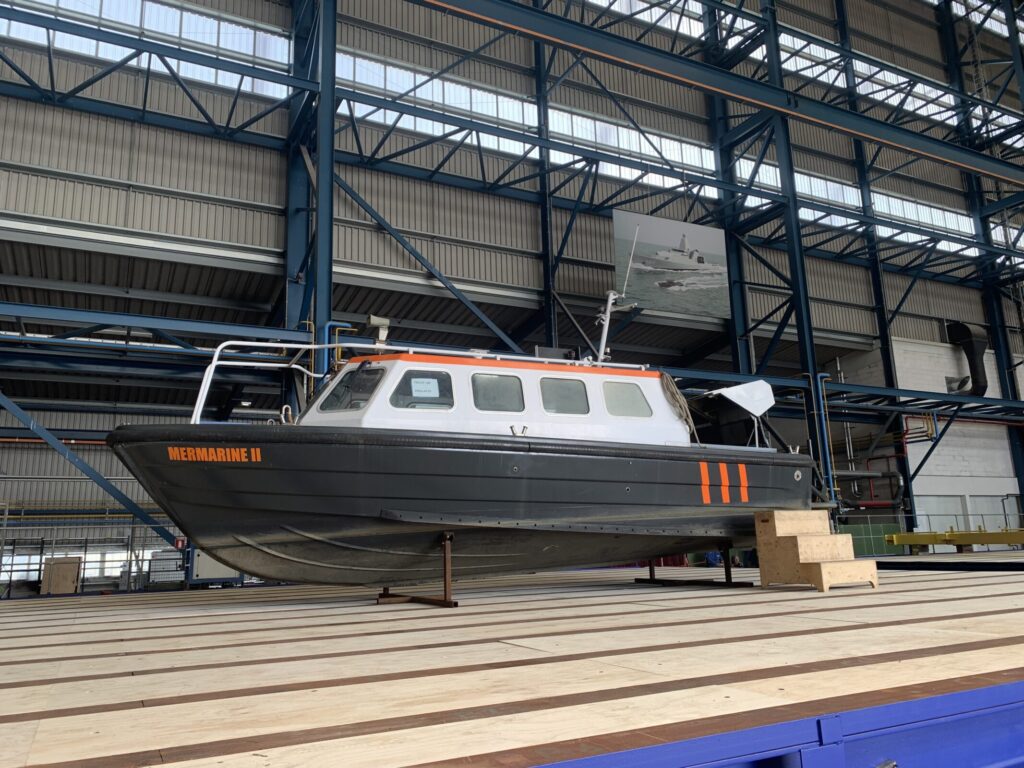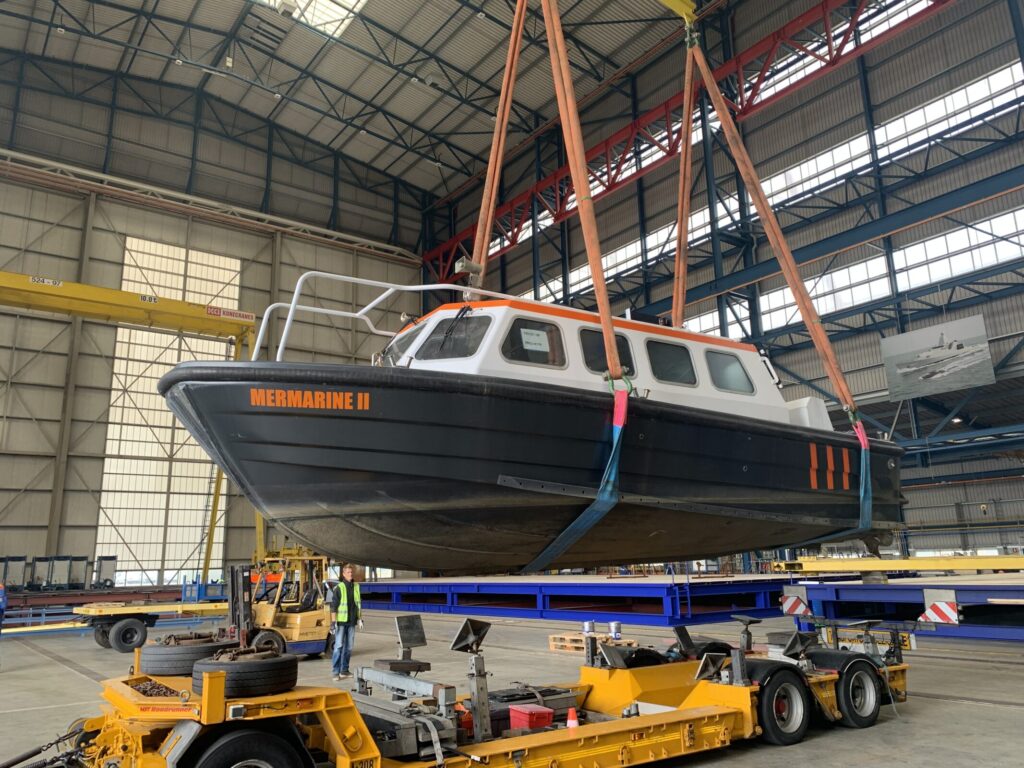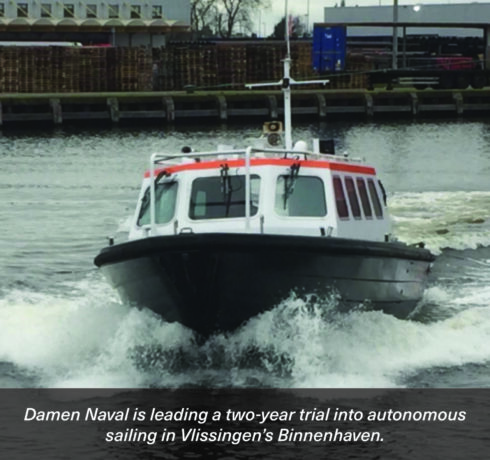“We are starting a new chapter,” says Jochem Nonhebel enthusiastically. The young Damen Naval Technical Specialist is leading a two-year trial into autonomous sailing in Vlissingen’s Binnenhaven. For the experiment, Damen Naval, together with the Delft University of Technology and others, is deploying a ten-metre long former patrol boat. “Autonomy, sustainability and digitalisation are important spearheads in Damen Naval’s policy vision. This trial fits in very well with that,” says Jochem.
 Technical Specialist Jochem Nonhebel is leading the Fieldlab Autonomous Sailing.
Technical Specialist Jochem Nonhebel is leading the Fieldlab Autonomous Sailing.
On Monday 20 September, Vlissingen’s Binnenhaven will transform into a field lab. From that day, a converted ex-patrol boat, originally built at Damen Hardinxveld, will perform all kinds of manoeuvres on the water without any crew members being involved. Technicians from Damen Naval and its partners in this experiment: TU Delft, the University of Applied Sciences in Vlissingen, and the Rotterdam company Captain AI (Artificial Intelligence), will operate the small boat, which is equipped with electric motors, from the shore using a computer. The vessel has been equipped especially for the test with cameras that can map its surroundings in 360 degrees.
The vessel also has sensors, GPS, radar and lidar on board. Lidar stands for LIght Detection And Ranging, and determines the distance to an object by means of laser pulses, while radar – RAdio Detection And Ranging – uses radio waves to observe the environment. It is “a wonderful experiment”, says Jochem, that was made possible by a grant from the European Commission from a fund for technological developments in the field of sustainability and digitalisation. Damen Naval is acting as project leader of the field lab.
 The Fieldlab uses a converted ex-patrol boat, that was originally built at Damen Hardinxveld.
The Fieldlab uses a converted ex-patrol boat, that was originally built at Damen Hardinxveld.
“The interesting thing about this test is that it is taking place in a harbour,” says Jochem. “You can research autonomous navigation in a laboratory at a scale level, in an artificial environment, they do that at TU Delft for example. But here in the Binnenhaven we have to deal with the complex reality of a real harbour, where fishing vessels and yachts are moving around, where super-yachts are moored and sometimes people are canoeing or swimming. That makes the test exciting and very challenging, because the unmanned boat will have to keep an eye on a lot of things at once…”
“Autonomy, sustainability and digitalisation are important spearheads in Damen Naval’s policy vision. This trial fits in very well with that.” Jochem Nonhebel
The test involves autonomous sailing, but Jochem stresses that, for safety reasons, there is always one person on board to keep an eye on things during the tests. But this person is not at the helm. If the vessel diverges from its course, this person can switch the robot ship back to a manually-driven vessel by pressing a big red button. “Of course, we have to comply with local safety regulations. And Damen Yachting has some expensive yachts in the harbour, so you have to take that into account.”
Jochem is convinced that autonomous sailing is the future. “The level that the technology has reached now makes it possible. I think that in time Damen Naval will also be able to meet the market demand for unmanned systems. And I am also thinking of the defence industry, because the armed forces also need autonomous solutions that can relieve them of certain tasks. Let me give an example. If the Royal Netherlands Navy wants to map underwater surroundings with a sonar using sound waves, the sonar is now attached to a helicopter before it goes into the water.”
 The vessel has been equipped with cameras that can map its surroundings in 360 degrees and has sensors, GPS, radar and lidar on board.
The vessel has been equipped with cameras that can map its surroundings in 360 degrees and has sensors, GPS, radar and lidar on board.
“Soon, thanks to autonomy, perhaps an unmanned boat will be able to lower the sonar into the water and transfer the desired data back to the mother ship. That will save the helicopter a lot of fuel and also maintenance costs – helicopters are very expensive to maintain – and such a boat might be able to work for days on end, while the pilot with his helicopter can only hover in the air above the water for a few hours at most. But I also imagine that a frigate will soon be able to manoeuvre autonomously into a port without any problem.
Or that a naval squadron will be surrounded by small unmanned boats that act as the eyes and ears of the squadron and can thus identify threats at an early stage and keep the ships and their crews safe.” The field lab will begin its work on 20 September with an official kick-off in the Binnenhaven. Besides the companies and institutes mentioned, the municipality of Vlissingen and the Province of Zeeland are also supporting the initiative. Jochem is looking forward to the kick-off and what will follow. “By the way, we could use some extra technical talent to help us on the road to autonomy…”

